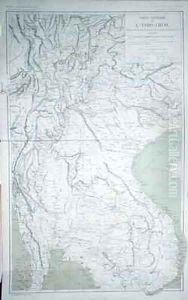Francis Garnier Paintings
Francis Garnier was a French naval officer and explorer rather than an artist, known for his expeditions in Southeast Asia and his role in French colonial expansion in that region. He was born on July 25, 1839, in Saint-Étienne, France. Garnier graduated from the École Navale in 1856 and embarked on a career in the French Navy.
Garnier is most famous for his exploration of the Mekong River. In 1866, he joined the Mekong Exploration Commission, an ambitious scientific expedition aimed at exploring the Mekong River from its delta in Vietnam to its source in Tibet, with the purpose of evaluating its potential as a trade route and assessing the natural resources along its course. The expedition was arduous and fraught with difficulties, but it succeeded in mapping large sections of the river and collecting valuable geographical and ethnographical information.
Continuing his career, Garnier was instrumental in the establishment of French influence in Tonkin (modern-day northern Vietnam). He was a strong proponent of French colonial expansion in the region, and he played a key role in the events that led to the establishment of a French protectorate in Vietnam.
Tragically, Francis Garnier's life was cut short when he was killed on December 21, 1873, during a skirmish with Chinese pirates in Hanoi. Garnier's death at the age of 34 brought an end to a life of adventure and exploration that had significant implications for the French colonial empire. Although not an artist in the traditional sense, Garnier's legacy is preserved in the detailed reports and maps he produced, which have been valuable to generations of historians and researchers studying the region.
